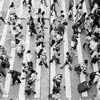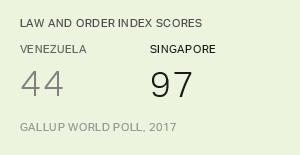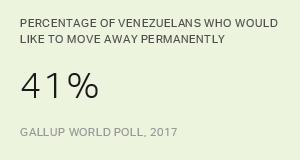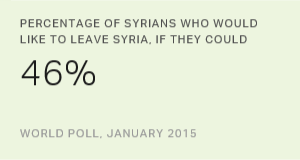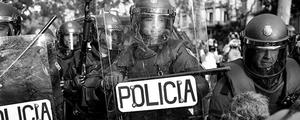Conflict in the Middle East, terrorism in the West, gang violence throughout Latin America -- from everything we read, see and hear from the news, it's easy to conclude that the entire world is a dangerous place. Is it?
Counter to what we might see and hear, a majority of people on the planet feel pretty safe. According to Gallup's 2018 Global Law and Order Report, 68% of the world feels safe walking alone at night in their communities. In fact, in places like Singapore and Norway, more than 90% of people feel safe.
But that doesn't mean we can ignore that this isn't the reality for the third of the world -- or about 1.6 billion people -- who live with fear. That's nearly equal to the entire populations of North America, South America and Europe combined.
The results come from the Gallup World Poll -- an ongoing project that informs global leaders on how people's lives are going. The Law and Order Index quantifies safety in over 140 countries. It measures how many people have been assaulted or been victims of theft in the past year, whether they trust their local police and whether they feel safe.
A good way to understand if crime is happening is to simply ask people if it's happened to them. This is how we know that on average, 13% of people worldwide -- or more than half a billion people -- had money or property stolen from them, and 5% -- or roughly 270 million -- report being mugged or assaulted.
These are critical measures because they are the on-the-ground truth of what is happening in a country. Leaders too often rely on crimes that have been reported to authorities. The problem, of course, is that not all crimes are reported -- especially if people don't trust their police.
This brings us to confidence in the local police. Overall, local police forces appear to get a lot of the credit for a relatively safe world. Nearly seven in 10 adults worldwide express confidence in their local police.
At least 80% in Western Europe, Southeast Asia and the U.S. and Canada express confidence. Half as many, 42%, in Latin America and the Caribbean can say the same.
At Gallup, we believe that the best leaders in the world don't just want safety for their citizens -- they want people to feel safe. And if making people feel safe is the objective, then leaders need a metric for that -- whether people feel safe.
While roughly two-thirds of people globally feel safe, this means a full one-third don't feel safe. Most people who don't feel safe live where you think they might, like war-torn Afghanistan and South Sudan and embattled Venezuela.
In countries like these, as much as half of the population has had money or property stolen in the past year, and few trust the police to do their job. But there are some surprises -- like Uzbekistan and Rwanda, where a lot of people feel safe.
Indicators such as these are important to monitor, particularly given that the United Nations is targeting "promoting just, peaceful and inclusive societies" as one of its Sustainable Development Goals. In fact, Gallup's metric of "feeling safe walking alone at night" is one of the indicators of Goal 16.
Safety is a basic condition for development. This is evident in the strong relationships Gallup sees between people's answers to questions about their own security and their own experiences with crime and law enforcement and external measures, such as GDP per capita and life expectancy.
These relationships illustrate how high crime rates can often negatively affect economic performance and people's well-being.
Gallup's 2018 Global Law and Order Report confirms conventional realities -- like Venezuela and Afghanistan being two of the most dangerous places on the planet and Norway and Singapore ranking among the safest.
It also yields some surprises -- like how the world might be safer than the media lead us to believe -- while at the same time driving home that security is not something that everyone can take for granted.
This piece originally appeared on The Hill on June 13, 2018.
